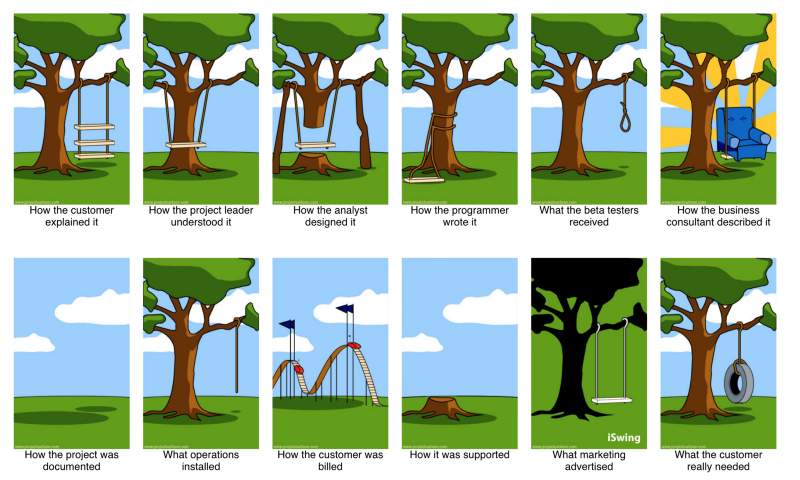Communicate effectively
In recent posts I have written about change, motivation, retention and networking. Those topics all rely on trust. I am planning to write about trust in a future post, but I would like to focus on a fundamental enabler to trust in this post — communication.
Lets look at how communication is defined in Wikipedia:
The act of conveying meanings from one entity or group to another through the use of mutually understood signs, symbols, and semiotic rules.
From this short sentence we can learn we need to pass on meaning, and do it in a mutually understood way.
![Yupi666 at English Wikipedia [CC BY-SA 3.0] (http://creativecommons.org/licenses/by-sa/3.0/)](https://matanyamos.es/posts/2019-02-24/communicate-effectively/communicate.jpg)
Yupi666 at English Wikipedia [CC BY-SA 3.0] (http://creativecommons.org/licenses/by-sa/3.0/)
Much ink has been spilled about communication in the past, especially around the topic of cultural communication. Indeed there are differences between cultures in communication and message conveying, however I would not cover them here.
Effective communication is especially critical when a change is planned or executed. As i wrote in a previous post at a time of change one needs to build a coalition. This is not possible without some great communication, but great communication is crucial after the change has been decided and is in execution phase.
Change leads to uncertainty and people hate uncertainty, and when there is uncertainty people tend to fill the void with rumors, those rumors later turn into ‘facts’, and it will be very hard or even impossible to fight the forged facts after they have been around for sometime and are regarded and common truth.
The way to prevent uncertainty and all of its fallout is to communicate clearly and effectively what are your intentions and the time they will be effective. The best example of purely clear communication is in procedure word but in reality no one talks this way in a day-to-day conversion. However, the ideas embedded in procedure word are indeed true.
When one tries to communicate a message, it is highly important to be clear and direct (as acceptable in your culture), and several miscommunications in the history had led to unexpected outcomes. A famous example being the use of the word mokusatsu used by Prime Minister Kantaro Suzuki of Japan in response to a question by reporters about the Allies demand of unconditional surrender. The word has a meaning of “no comment”, but the word was translated to the Allies as meaning “not worthy of comment; held in silent contempt.” This was a contributing factor to engage Japan.
Most miscommunications don’t end up with an atomic bomb, but might have uncomfortable consequences. Here is a famous illustration

The main point in effective communication is ‘Do Not Surprise’. When you are trying to convey a message, be sure your audiences know what you are talking about, are on the same page as you are, and are seeing your point of view. Once you have conveyed your message clearly, execute its outcome as soon as possible, preventing a period of FUD (fear, uncertainty, doubt). Of course, if your message is just a command you can do that, but a normal communication is two-sided. Do not have a monologue, make sure the other side of the conversion has a say, and is heard. Once all opinions have been heard, it is the time to come to a conclusion and execute it.